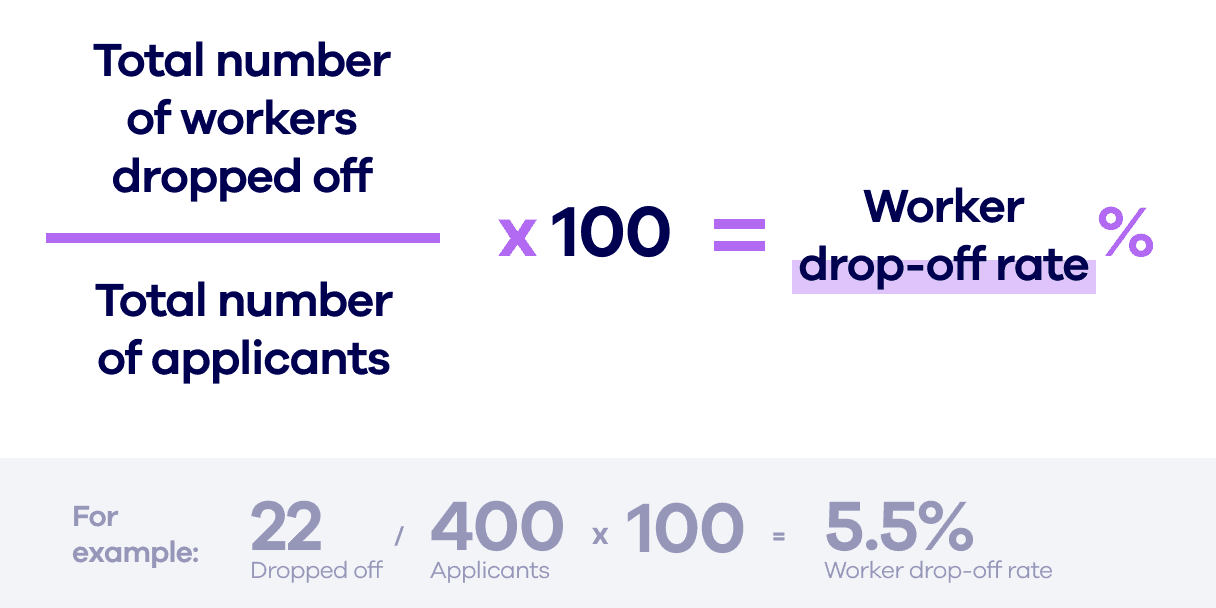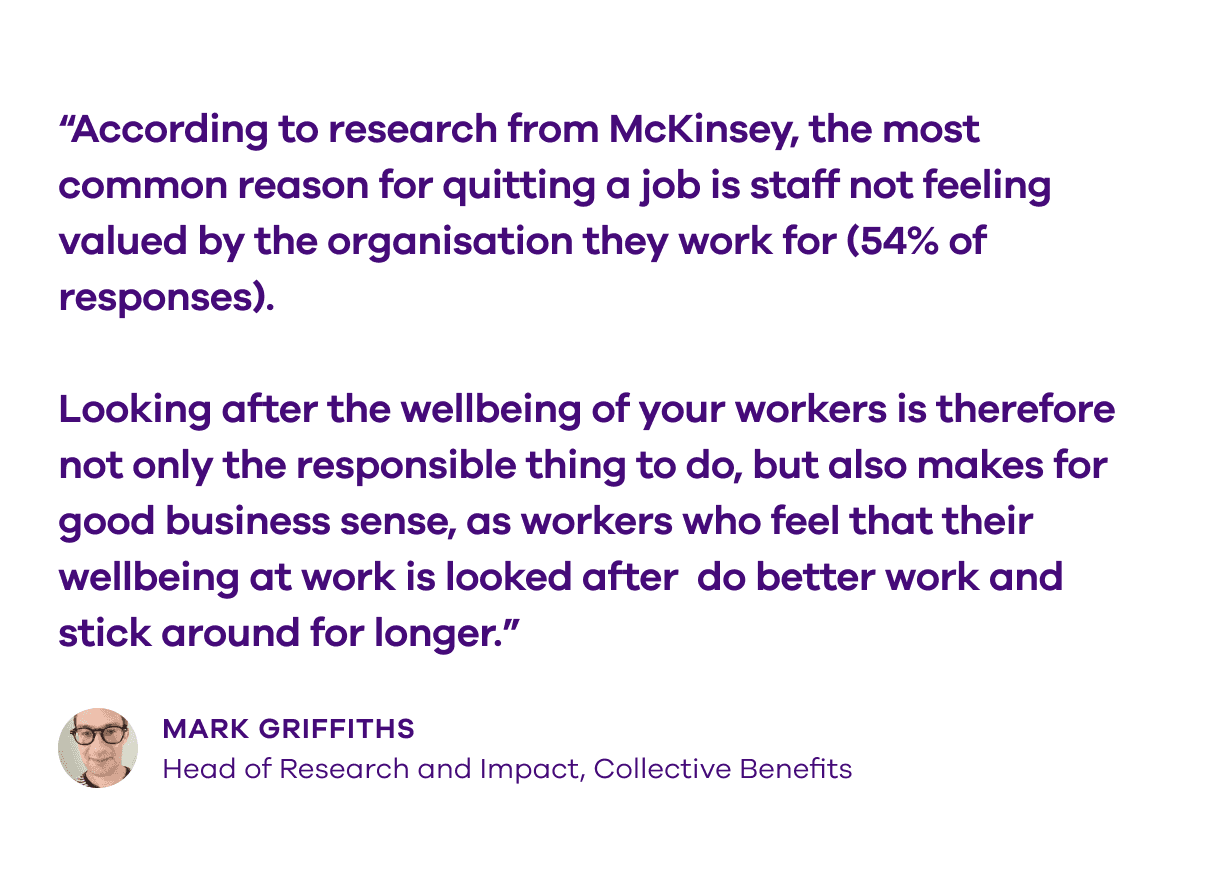Things have changed around here
We've rebranded from Collective Benefits to Onsi. This content is from before our rebrand so you may see mention of our old name.
A sticky workforce does what it says on the tin. It’s a workforce that sticks around, helping your business to stay efficient and growth-fuelled.
Take note: contrary to outdated beliefs, platform economy businesses can build a strong, dedicated workforce just like any other company. And flexible workers can build legitimate, thriving careers with an on-demand platform of their choice, too.
Let’s get stuck (sorry) in 👇
Building a sticky workforce is essential to sustainable business growth
Here’s why:
It means the money you spend on recruitment and worker wellbeing is well-spent, not wasted.
When you’re hiring at scale, a tiny percentage drop in engaged workers can mean a huge difference in profits.
Churn is really bad for recruitment and business in general. It damages your business reputation and can even hamper your business’s abilities to fulfil the needs of your customers. So it’s bad for customers, too. Yikes.
How do you figure out how sticky your workforce is?
Most platform economy companies assess workforce ‘stickiness’ by looking at their workers’:
Jobs completed – the more jobs a worker has completed, the more loyal they are to your platform.
Positive reviews – the better a worker’s reviews are, the more dedicated you can assume they are to doing the job well.
Reliability (how often they turn up for shifts) – the more reliable a worker is, the more invested they are in your platform.
Discovering your milestone: when do workers stop dropping off?
Ultimately, workforce stickiness is all about forging long-term, fruitful relationships with your staff. To do that, it’s important to understand at what point workers go from being likely to drop-off, to being likely to stick around for the long haul.
This usually after a certain amount of successful jobs have been completed.
Finding out where this milestone is can help you create a stickier workforce. You just need to focus on getting workers to that milestone number of jobs or shifts completed.
To find out your company’s milestone, look at drop-off rates during different early stages of a worker’s time with your platform.
Then all you need to do is pin-point where drop-offs start to reduce.

Here’s how to get your workers to that crucial milestone 👇👇👇
Kicking things off: Set workers up for success from the get-go
Start thinking about worker retention from the very earliest stages of the hiring and onboarding process. By putting effort in early on, you’ll be much more likely to find workers that are a great fit for your company, and to engage them in a way that sticks.
For the best chance at success, focus on improving these areas:
Recruitment: make sure you’re putting all your efforts into recruiting brilliant people that are genuinely likely to want to start up a long-term relationship with your platform. It doesn’t have to be difficult either - check out our favourite flexible worker recruitment tools.
Training: Poor onboarding and training can lead to disengaged workers and higher churn. On the flip side, the right applicant onboarding and training will help your workers do the best job they can, bring in those stellar reviews and contribute to worker wellbeing in the process.
Set up costs for workers: Are there any ways you can help workers manage the cost of the tools, uniforms or equipment they need to pick up their first jobs? Try:
Offering a buy-now-pay-later scheme for initial outgoings
Offering a scheme that lets workers spread the cost of initial outgoings
Offering discounts through a savings scheme on tools, uniform and other equipment workers need to get started
Keeping up momentum: Make it easy & stress-free to pick up work
Make the process of picking up jobs as streamlined as possible for workers by:
Sending regular reminders: whether it’s in-app, by text, WhatsApp message or email – sending regular reminders to workers encourages them to take that next shift.
Making it easy to book shifts: improving your app or portal UX, making sure workers can get technical support if they need to, or trying a tool like Skedulo to streamline flexible worker shift management
Helping with work-related travel: the cost of fuel can act as a real barrier to workers picking up shifts, and transport strikes can, too. Support your workers with a fuel discount scheme, or organise alternative routes to work for them during strikes – like partnering up with a taxi firm
Sustaining success: Help your workers forge long-term careers
Think about the ‘what’s next’ after a worker has reached their milestone shift. How about offering a bonus to those that get there?
This is a tactic used by a major platform economy company in the domestic help space, and is a great way to motivate workers to stay loyal.
It’s important to think about the longer term future too. How can you support your workers’ wellbeing and provide a viable, gratifying career for them?
Here’s what our Head of Social Impact Mark has to say:

Building a sticky workforce: final thoughts
Building a sticky workforce requires attention to detail from the very first interaction you have with applicants. Setting them up for success is crucial – which means making areas like onboarding and training as concise and effective as possible.
Removing as many barriers to their picking up jobs is also vital. It doesn’t take much for a worker to jump ship due to irritating complications, or not being able to earn quickly enough. In a nutshell? Putting effort in early on is invaluable – with the potential to pay off infinitely.
Want to learn more about retaining flexible workers? Find out how Ryde achieved an 80% retention rate here.



